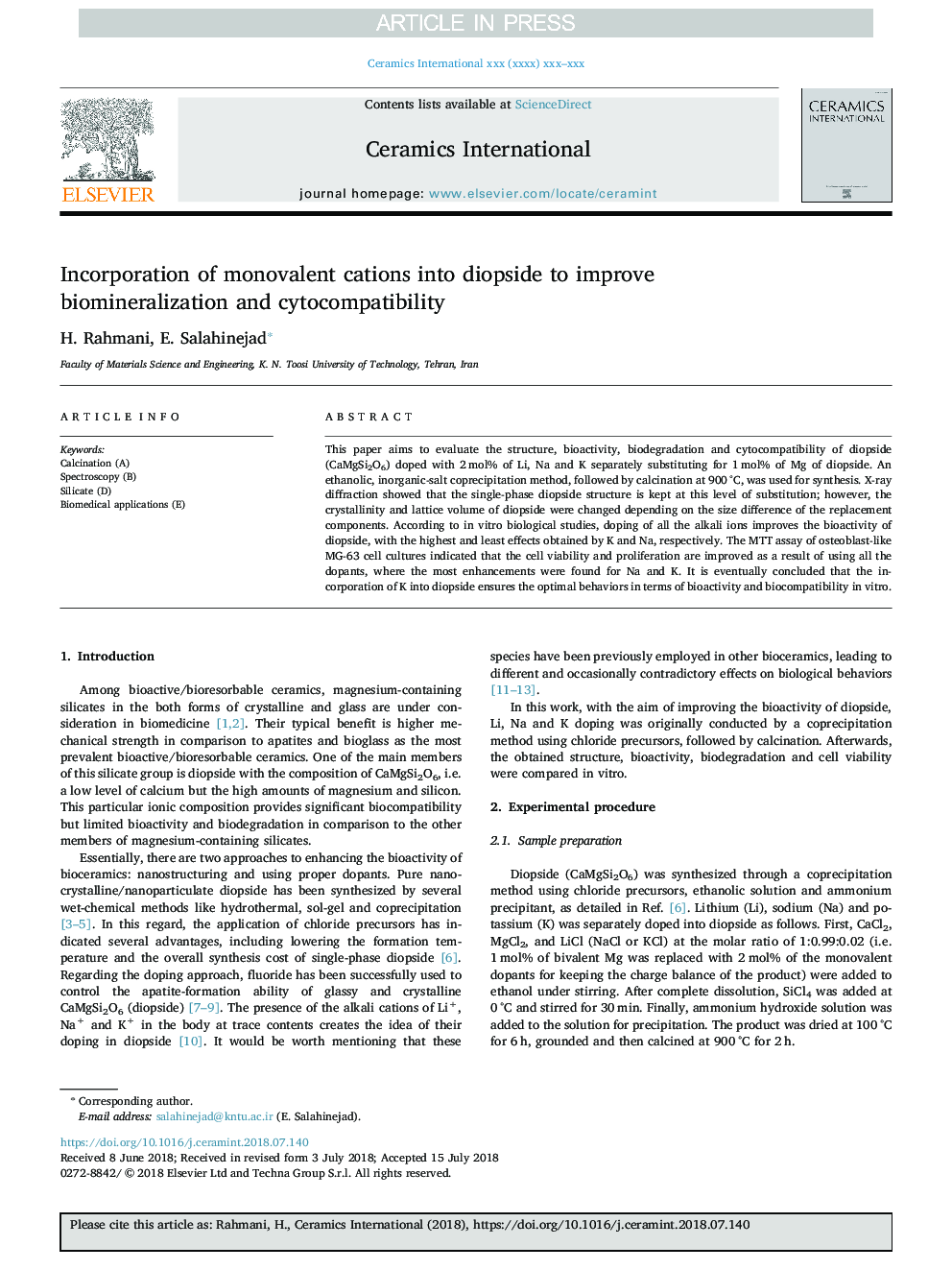| Article ID | Journal | Published Year | Pages | File Type |
|---|---|---|---|---|
| 10155377 | Ceramics International | 2018 | 7 Pages |
Abstract
This paper aims to evaluate the structure, bioactivity, biodegradation and cytocompatibility of diopside (CaMgSi2O6) doped with 2â¯mol% of Li, Na and K separately substituting for 1â¯mol% of Mg of diopside. An ethanolic, inorganic-salt coprecipitation method, followed by calcination at 900â¯Â°C, was used for synthesis. X-ray diffraction showed that the single-phase diopside structure is kept at this level of substitution; however, the crystallinity and lattice volume of diopside were changed depending on the size difference of the replacement components. According to in vitro biological studies, doping of all the alkali ions improves the bioactivity of diopside, with the highest and least effects obtained by K and Na, respectively. The MTT assay of osteoblast-like MG-63 cell cultures indicated that the cell viability and proliferation are improved as a result of using all the dopants, where the most enhancements were found for Na and K. It is eventually concluded that the incorporation of K into diopside ensures the optimal behaviors in terms of bioactivity and biocompatibility in vitro.
Related Topics
Physical Sciences and Engineering
Materials Science
Ceramics and Composites
Authors
H. Rahmani, E. Salahinejad,
